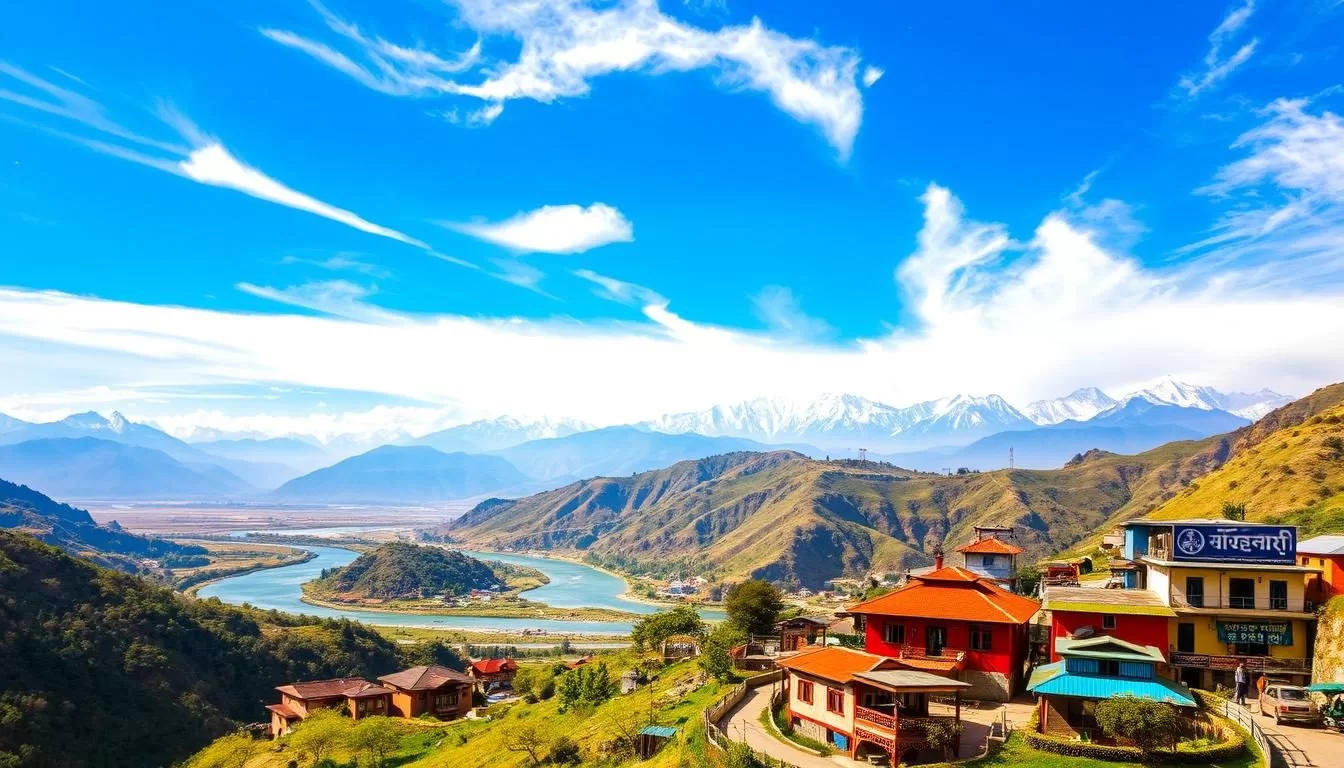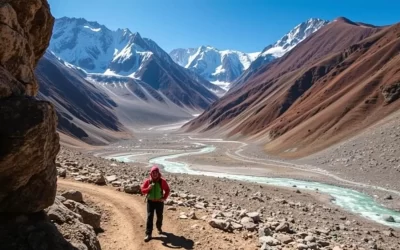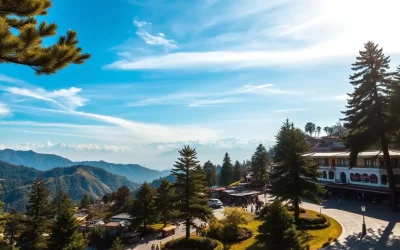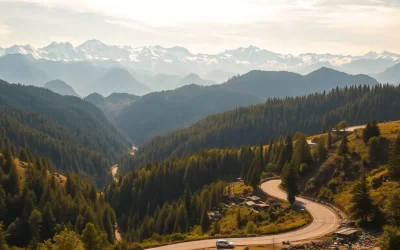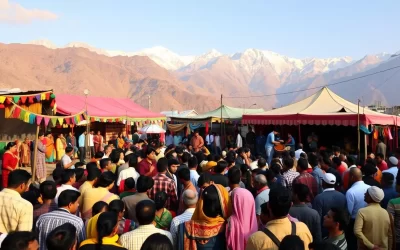✓ Accommodations✓ Flights✓ Rental Cars
Nestled in the Himalayas, Uttarakhand is known as the “Dev Bhoomi” or the land of Gods, a place where nature’s beauty is believed to be so divine that even the gods couldn’t resist visiting. This northern region is divided into two main parts: the Kumaon and the Garhwal, each with its unique cultural and linguistic identity.
As you explore this enchanting state, you’ll discover a rich tapestry of languages spoken by its diverse people. The linguistic landscape is influenced by the geographical division and the presence of various tribes such as the Bhotia, Tharu, and Jaunsari. Understanding the language and cultural nuances of Uttarakhand is key to appreciating its heritage.
The Linguistic Diversity of Uttarakhand
The linguistic landscape of Uttarakhand is as diverse as its geography. Uttarakhand is home to people of multiple ethnicities who speak multiple languages.
Geographical and Cultural Context
Uttarakhand’s mountainous terrain has contributed to the development of distinct language communities across different valleys and regions. The state’s diverse cultural heritage is reflected in the various languages spoken by its inhabitants.
Language Distribution in the State
The six primary languages spoken in Uttarakhand are Hindi, Sanskrit, Garhwali, Kumaoni, Jaunsari, and Urdu. While Hindi is widely spoken throughout the state, regional languages have specific geographical domains, reflecting the regional language characteristics.
Hindi: The Primary Official Language
As you explore the linguistic landscape of Uttarakhand, you’ll find that Hindi plays a pivotal role as the primary official language. This status is not just a matter of widespread use; it’s backed by official recognition.
Status and Official Recognition
Hindi is recognized as the official language of Uttarakhand by the Eighth Schedule of the Indian Constitution. This recognition underscores its importance in official contexts, making it a crucial part of government administration and legal proceedings.
Usage in Education and Daily Life
Hindi is not only the language used in official contexts but is also taught in schools across Uttarakhand, including remote areas. Although it may not be the mother tongue for everyone, especially in regions like Garhwal and Kumaon, it serves as a unifying force, enabling communication across diverse linguistic backgrounds. With approximately 88.26% of the population speaking Hindi, it’s a vital part of daily life and education.
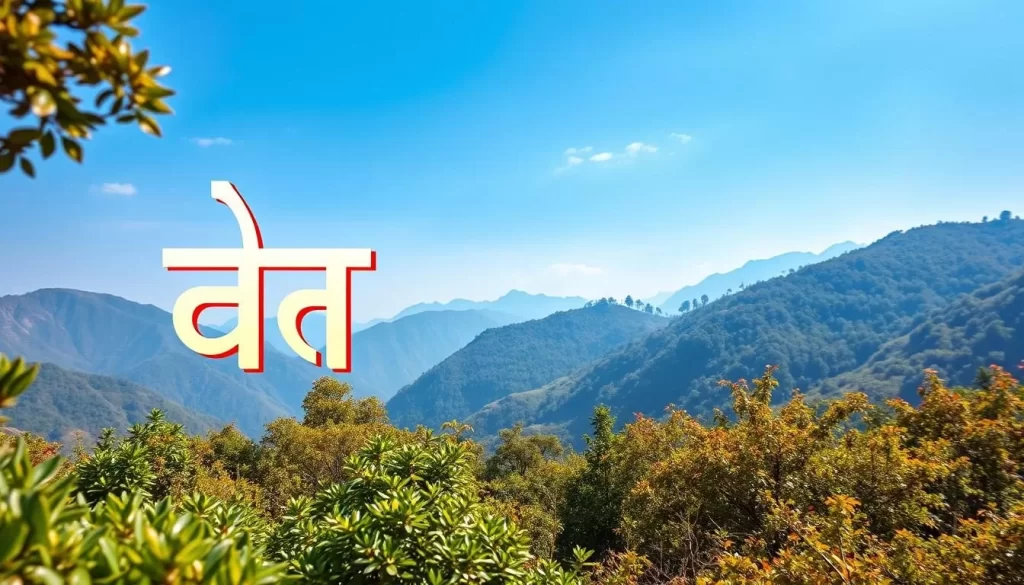
Sanskrit: The Second Official Language
Uttarakhand has recognized Sanskrit as its second official language, a distinction it holds to this day. You are about to explore the significance and implications of this recognition.
Historical Significance and Current Status
Sanskrit, an ancient language rooted in Indian heritage, has been pivotal in shaping many modern Indian languages. Although it’s no longer used in daily conversations, its historical importance remains. On January 19, 2010, Chief Minister Ramesh Pokhriyal declared Sanskrit as the second official language of Uttarakhand, highlighting its cultural significance.
Teaching and Preservation Efforts
Sanskrit is taught in schools across Uttarakhand, ensuring its legacy continues. Educational policies make it a compulsory subject, allowing children to learn and appreciate this classical language. The state’s efforts to preserve Sanskrit include promoting it through various educational institutions.
| Year | Event | Significance |
|---|---|---|
| 2010 | Sanskrit declared second official language | Cultural preservation |
| Present day | Sanskrit taught in schools | Educational and cultural continuity |
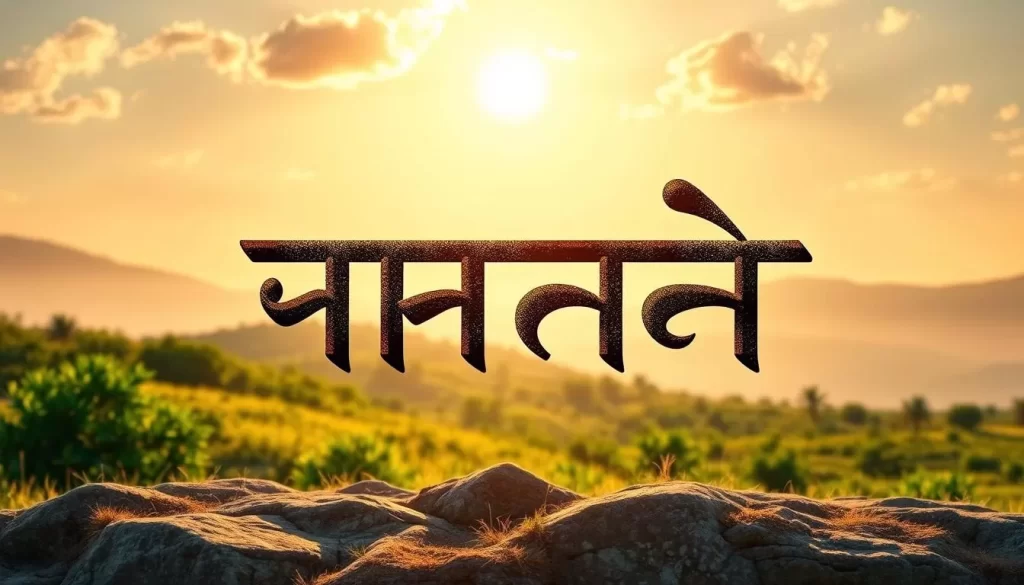
Garhwali: The Northwestern Regional Language
As you explore the linguistic landscape of Uttarakhand, you’ll discover Garhwali, a significant regional language spoken in the northwestern Garhwal region. With a rich cultural heritage, Garhwali is an integral part of the identity of the people residing in this area.
Regional Distribution and Dialects
Garhwali is spoken across various districts in the Garhwal region and has several dialects, including Srinagariya, Badhani, Tehri, Lohbya, and Jaunsari. These dialects differ from one another, sometimes making it challenging for people from different areas, like Tehri Garhwal and Pauri Garhwal, to understand each other’s variations.
| Dialect | Region |
|---|---|
| Srinagariya | Srinagar |
| Badhani | Badhani region |
| Tehri | Tehri Garhwal |
Cultural Significance and Modern Usage
Garhwali has been a spoken language, passed down through generations verbally. Today, it is prevalent in folk music and literature, with popular singers like Narendra Singh Negi contributing to its preservation. The language has also spread beyond Uttarakhand to cities like Delhi and Mumbai, where Garhwali Kavi Sammelans are organized.

Kumaoni: The Central Pahari Language
In the heart of Uttarakhand lies the Kumaon region, where Kumaoni, a Central Pahari language, is predominantly spoken. You will find that Kumaoni is closely related to Garhwali, another significant language in the state.
Geographic Distribution and Characteristics
Kumaoni is spoken by approximately 20 lakh people in the Kumaon region. The language has regional dialects, including central Kumaoni in Almora and Nainital, north-eastern Kumaoni in Pithoragarh, and southeastern Kumaoni in the south-eastern part of Nainital. Kumaoni uses the Devanagari script and follows the grammatical rules of other Indo-Aryan languages.
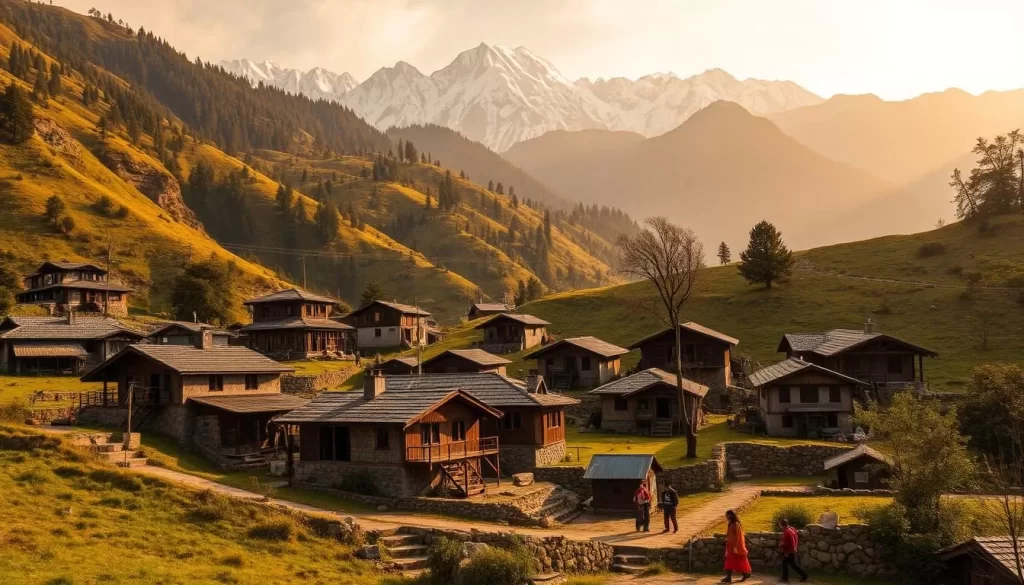
Challenges in Preservation
Despite its rich cultural significance in literature, theater, and folk music, the Kumaoni-speaking population is declining. This decline poses significant challenges for the preservation of the language. Efforts by cultural organizations and the government are underway to document and preserve Kumaoni language and literature for future generations.
Uttarakhand, India: Official and Widely Spoken Languages Beyond the Mainstream
As you explore the linguistic landscape of Uttarakhand, you’ll discover languages that are spoken beyond the mainstream. The state’s linguistic diversity is not limited to its official languages, but extends to several other languages spoken by its people.
Jaunsari: The Tribal Language
The Jaunsari language is spoken by the Jaunsari tribal community, primarily found in the Jaunsar-Bawar region of Dehradun district. With around 1 lakh speakers in India, Jaunsari is considered a Western Pahari language and is regarded as a dialect of Garhwali. However, due to the distinct identity of the Jaunsari community, it is often listed separately.
Urdu and Other Minority Languages
Uttarakhand is also home to Urdu-speaking populations, making up around 5.88% of the population as per the 2011 Census, primarily in urban areas like Haridwar. The state’s linguistic diversity is further enriched by the presence of other minority languages, including Punjabi, Bengali, Nepali, and Maithili, spoken by migrants who have settled in the region.
| Language | Speakers | Region |
|---|---|---|
| Jaunsari | 1 lakh | Jaunsar-Bawar region, Dehradun |
| Urdu | 5.88% | Urban areas like Haridwar |
Conclusion: Preserving Uttarakhand’s Linguistic Heritage
Preserving Uttarakhand’s linguistic heritage is crucial. The state is home to a diverse range of languages, including Hindi, Sanskrit, Garhwali, Kumaoni, and Jaunsari. Efforts by the government and cultural organizations are underway to document and promote these languages. As Uttarakhand continues to attract migrants, its linguistic diversity is both a challenge and an opportunity. You can appreciate the importance of balancing preservation with practical communication needs.
The above is subject to change.
Check back often to TRAVEL.COM for the latest travel tips and deals.
